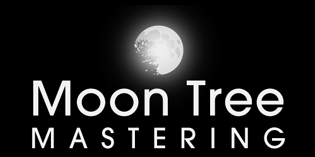Mastering is a crucial step in the audio production process that enhances the overall quality, clarity, and impact of a recording. It involves fine-tuning the mix and preparing the audio for distribution across various platforms. In this article, we will explore 11 valuable tips to help you achieve better mastering results and elevate the sonic excellence of your audio projects.
Begin with Quality Mixing
Before diving into the mastering phase, ensure that your mix is well-balanced and sounds the way you desire. Address any glaring issues in the mix, such as excessive noise, imbalanced frequencies, or dynamic inconsistencies. A solid mix provides a solid foundation for the mastering process.
Invest in Accurate Monitoring
High-quality studio monitors and headphones are essential for accurate monitoring during mastering. Ensure that your monitoring equipment is calibrated properly and familiarize yourself with its characteristics. This will enable you to make precise adjustments to the audio without any guesswork.
Maintain Headroom
When mastering, it is crucial to leave sufficient headroom in your audio files. Aim for a peak level of around -6dB to -3dB to avoid distortion and allow enough room for further processing. This headroom preserves the dynamics and prevents clipping, providing more flexibility during the mastering stage.
Use Multiband Compression Wisely
Multiband compression is a powerful tool in audio mastering. It allows you to control specific frequency ranges independently, effectively addressing issues such as excessive bass or harsh highs. However, use it sparingly and with precision, as overusing it can result in an unnatural or squashed sound.
Embrace EQ Techniques
Equalization plays a vital role in balancing the frequency spectrum and enhancing the tonal quality of your audio. Use EQ to address any problematic frequencies, shape the sound, and add clarity and definition. Experiment with gentle adjustments and subtle boosts to achieve the desired results.
Pay Attention to Stereo Imaging
Stereo imaging refers to the spatial placement of sounds across the stereo field. Use tools like stereo widening or narrowing to create a balanced and immersive soundstage. However, be cautious not to overdo it, as excessive widening can lead to phase cancellation or an unnatural stereo image.
Utilize Saturation and Harmonic Exciters
Saturation and harmonic exciters are valuable tools for adding warmth, character, and subtle harmonics to your audio. They can breathe life into dull recordings and enhance the overall presence and depth. Experiment with different saturation levels to find the sweet spot that complements your audio.
Apply Transparent Limiting
Limiting is employed to control the dynamic range and maximize the perceived loudness of a track. When using limiters, prioritize transparency and avoid excessive loudness at the expense of audio quality. Maintain a healthy balance between loudness and dynamic integrity, ensuring the final result sounds natural and pleasing.
Consider the Playback Environment
Keep in mind that your audio will be played back in various listening environments. Test your mastered tracks on different speakers, headphones, and devices to ensure they translate well across different systems. This step will help you identify any potential issues and make necessary adjustments for optimal playback on different platforms.
Take Breaks and Refresh Your Ears
Mastering requires intense focus and attention to detail. Regularly take short breaks during the process to refresh your ears and regain perspective. Listening fatigue can affect your judgment, and taking breaks allows you to return with renewed clarity, ensuring accurate decision-making.
Trust Your Ears and Experiment
While technical guidelines are valuable, ultimately, your ears are your most important tool. Trust your instincts and experiment with different techniques, plugins, and settings to achieve the desired sound. Each project is unique, and sometimes thinking outside the box can lead to remarkable results.
Conclusion
By implementing these 11 tips, you can significantly improve your audio mastering results. Remember to start with a solid mix, invest in accurate monitoring, and use tools like compression, EQ, and saturation judiciously. Consider the playback environment, take breaks, and trust your ears throughout the process. With practice and perseverance, you will enhance the sonic quality of your audio projects and captivate your audience with professional-level mastering.
FAQs
Is mastering necessary for every audio project?
While mastering is not mandatory, it greatly enhances the overall quality and impact of audio recordings, making them sound more professional and polished.
Can I master my audio using headphones alone?
While headphones can be useful, it is advisable to cross-reference your mastering decisions on high-quality studio monitors to ensure accurate and balanced results.
How loud should my mastered audio be?
The loudness of your mastered audio depends on the desired genre, playback platform, and personal preference. However, it’s crucial to strike a balance between loudness and preserving the audio’s dynamic range.
Are there any specific file formats I should use for mastered audio?
The most common file format for mastered audio is WAV, as it retains the highest quality. However, you may need to convert your audio to different formats depending on the intended distribution platforms.
Should I master my audio myself or hire a professional mastering engineer?
It depends on your experience and the level of quality you wish to achieve. While self-mastering is feasible with the right knowledge and tools, a professional mastering engineer brings expertise and an unbiased perspective to elevate your audio to its full potential.
Remember, the key to successful audio mastering lies in continuous learning, experimentation, and developing your listening skills.
